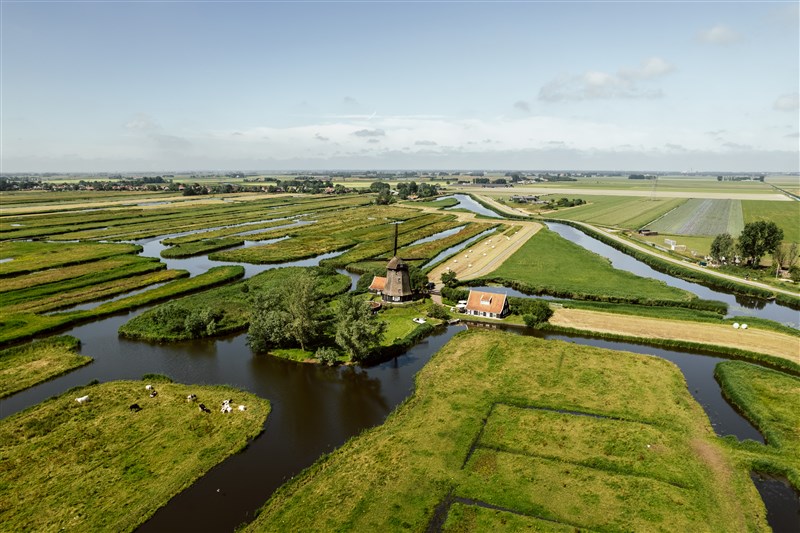Discover UNESCO stories of European history
The Netherlands, steeped in European history, boasts a range of UNESCO World Heritage Sites that highlight its natural wonders and showcase its significant role in shaping European civilization. Here are some ideas for a trip to discover these historical gems.
The Defense Line of Amsterdam offers a glimpse into the country’s military history. Constructed between 1883-1920, this extensive network of fortifications, canals, and waterworks was designed to protect Amsterdam from potential invasions. Today, visitors can explore the fortresses, bunkers, and scenic landscapes of the Defense Line, gaining insights into the country’s military past while enjoying recreational activities such as hiking and cycling.
Located in the province of Flevoland, Schokland and Surroundings is a UNESCO World Heritage Site of archaeological and geological significance. Schokland, once an island in the Zuiderzee, was inhabited by humans for centuries before it was abandoned due to the threat of flooding. The site showcases geological formations shaped by retreating glaciers of the last Ice Age and remnants of prehistoric and medieval settlements. Explore the open-air museum and surrounding countryside for a glimpse into the region’s past and its ongoing battle with water management.
The Wadden Sea, a UNESCO site since 2009, is a mesmerizing coastal wetland spanning the coasts of Denmark, Germany, and the Netherlands. The Dutch section stretches across three northern provinces: Groningen, Friesland, and Noord-Holland. This vast area is a dynamic landscape of tidal flats, sandbanks, salt marshes, and dunes.
The Wadden Sea is of immense ecological importance, serving as a vital stopover and breeding ground for millions of migratory birds. It also supports a diversity of marine life, including seals and various fish species. The unique intertidal zones are teeming with rich biodiversity, a haven for countless plant and animal species.

The Beemster Polder, once a shallow lake, is a meticulously planned and organized agricultural area. Constructing an extensive system of canals, dikes, and windmills, the Dutch successfully drained the lake and transformed it. The geometric layout of fields, the well-preserved historic structures, and the traditional farms contribute to the area’s unique charm.
Today, the Beemster Polder Area is a thriving agricultural region producing a variety of crops and dairy products. Explore the picturesque countryside by foot, bicycle, or even by taking a scenic boat ride along the canals. The serene atmosphere, coupled with its historical significance, makes the site a captivating destination.
The Netherlands’ UNESCO World Heritage Sites offer a fascinating journey showcasing the country’s natural wonders, architectural achievements, and historical significance. From the enchanting Wadden Sea to the rich history of the Beemster Polder Area, the Netherlands provides a wealth of experiences that celebrate its diverse heritage and contributions to European history.